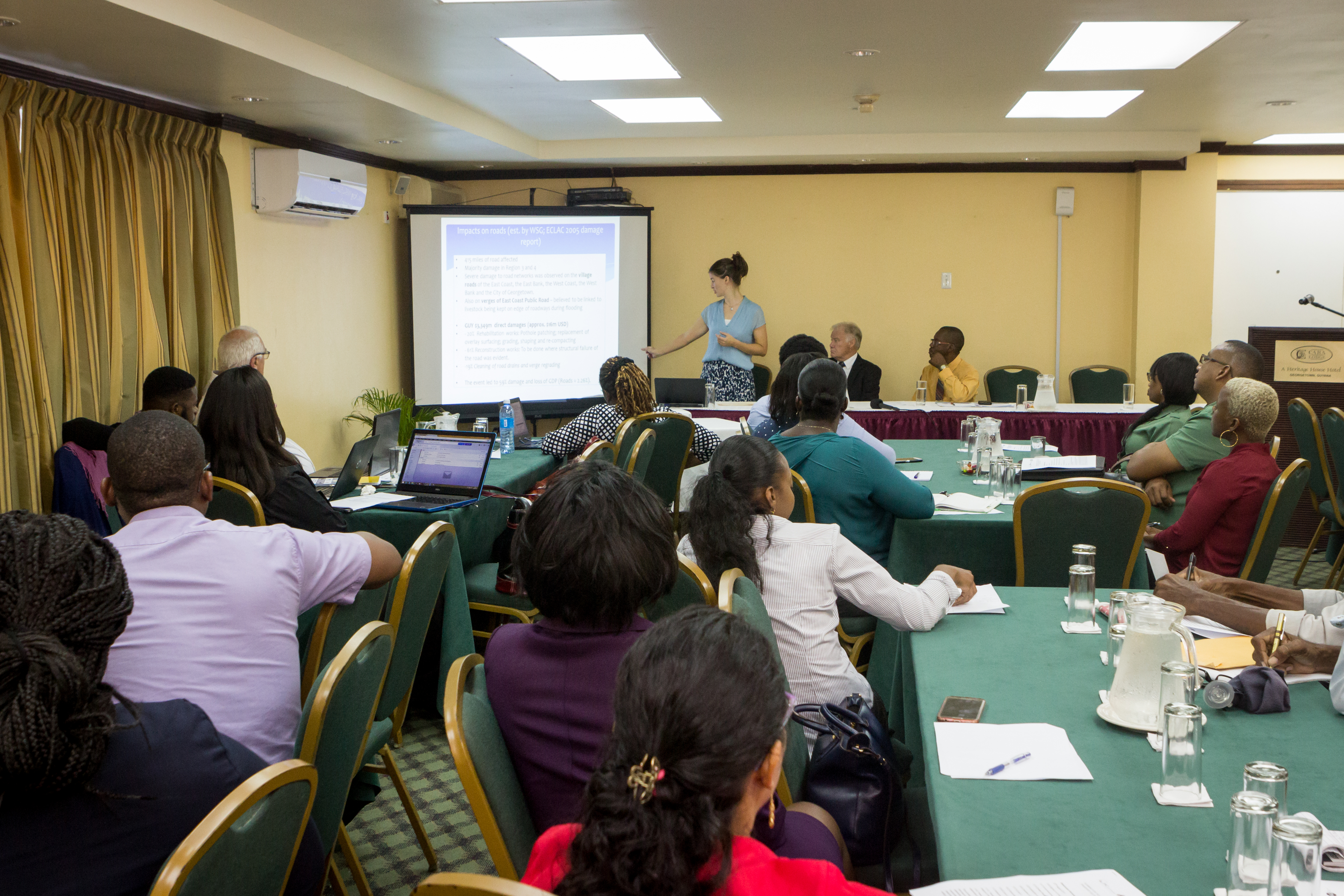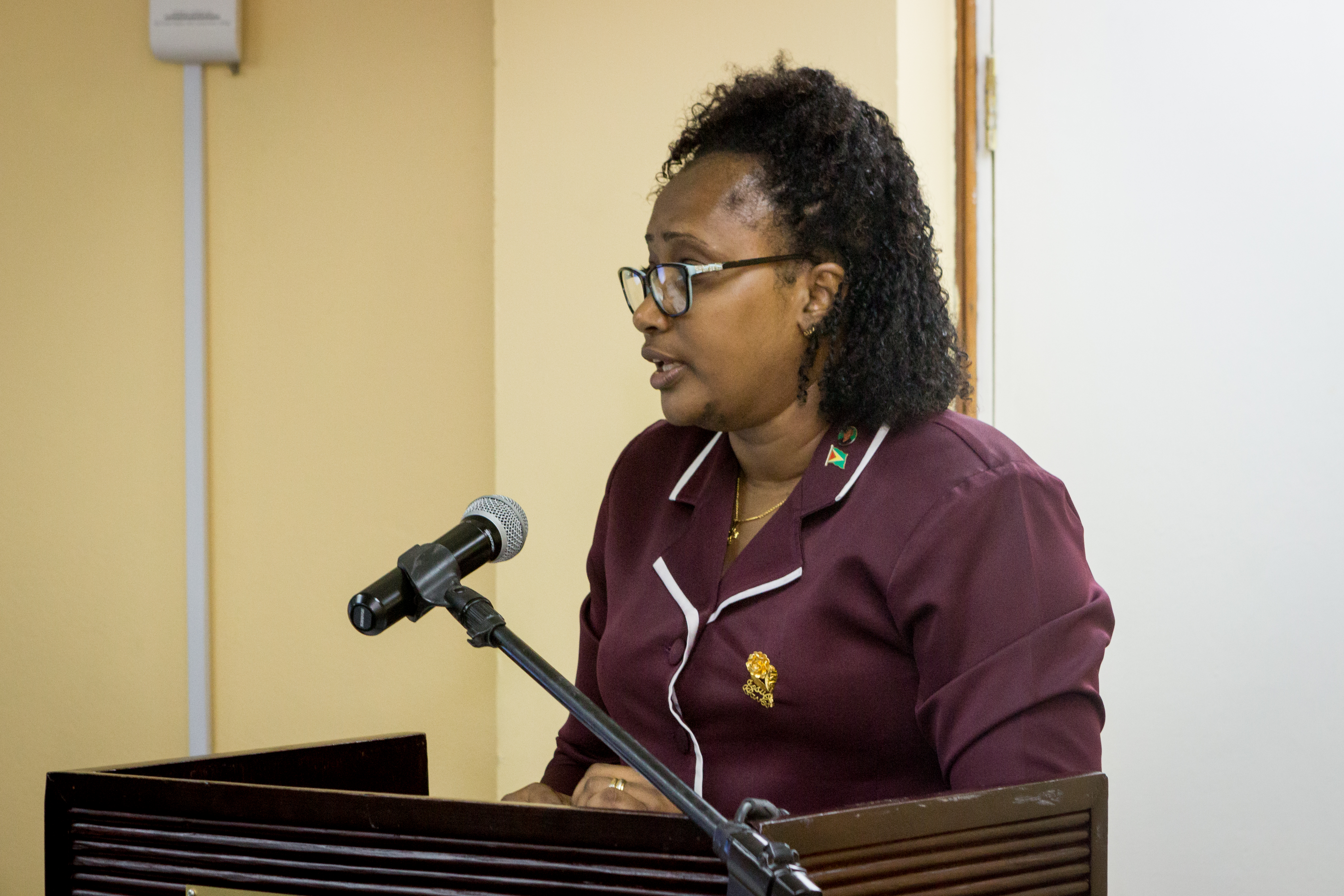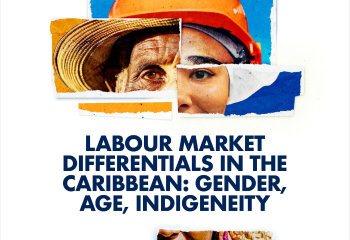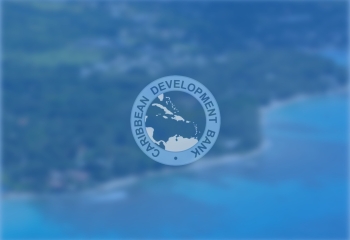Climate-resilient public road infrastructure key to development in Guyana
Transportation stakeholders in Guyana view climate-resilient public road infrastructure as critical to the country’s development.
The point was reinforced at a stakeholder workshop hosted by the Caribbean Development Bank (CDB), which took place in Georgetown on Tuesday, August 22.
The workshop is part of activities being completed under a study, which aims to integrate climate resilience in the road transport sector in Borrowing Member Countries (BMCs) of CDB through the establishment of robust and operational climate resilience sector policies and investment plans in the sector. The study is being implemented under the African Caribbean Pacific-European Union-Caribbean Development Bank Natural Disaster Risk Management (ACP-EU-CDB NDRM) Programme in Caribbean Forum (CARIFORUM) countries. The Programme, launched in July 2014, supports disaster risk reduction and climate change adaptation activities in the CARIFORUM countries.
The existence of persistent threats to the national road infrastructure was underscored during stakeholders’ discussions at the workshop. Many of the Guyanese participants, which included representatives from government ministries, considered a study of this area as critical.
“When all of this is done we need to make it a priority so that it can influence our planning for infrastructure development for roads going forward,” said Janelle Christian, who heads the Office of Climate Change in the Ministry of the Presidency of Guyana.
She added that it was critical for the issue to move from policy to “making it part of our development planning.”
The study will also contribute to mapping many of the main roads in the country’s main Regions, including Regions 3, 4 and 5.
Those roads were severely affected by flooding along Guyana’s coastline in 2015. During that flood, 415 miles of roads were damaged according to the Work Services Group within the Ministry of Public Infrastructure, Guyana. Damage was estimated at USD16 million, according to Olivia Palin of Acclimatise, a climate risk management firm.

“There was severe damage to village roads in these parts of the country, in East Coast, East Bank, West Coast, West Bank and Georgetown and [damage was] also reported on the verges of the East Coast public road which is believed to be linked to livestock being kept on roadways during the flood event,” Palin said.
Guyanese Minister within the Public Infrastructure Ministry, Annette Ferguson said there has also been growth in the volume of transported passengers and freight.
“That growth has created a demand for greater interconnection and better mobility,” she told stakeholders.

Minister Ferguson said that many communities remain inaccessible during natural disasters and that, therefore, it would be incumbent on the Government of Guyana to provide and maintain interconnectivity.
“Climate change can contribute to an acceleration in decay of our road ways and we must explore the use of more sustainable materials in their construction.” Minister Ferguson said. “We also need to upgrade and advance our drainage structures to minimise the damaging effects floods can have on our roadways,” she noted.
The impact of climate variability and change has negatively affected road infrastructure in the Bank’s BMCs, according to CDB’s Operations Officer, Whitfield Clarke. These impacts are due to rising sea levels and more frequent storms, heavy rainfall and related flooding.
“In 2015 alone, Dominica and Bahamas suffered damage to their road infrastructure in excess of USD300 million,” Clarke said. He continued, “Right in Guyana, in the not too distant past, the highway along the seawall road had to be closed and traffic diverted due to inundation from intense rainfall and adverse tidal conditions.”
A similar workshop is scheduled to take place with Saint Lucian stakeholders in Castries from August 28 to September 1, 2017.


